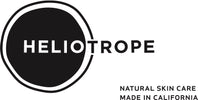Vitellaria paradoxa, the shea tree, grows across the African continent in the dry savanna belt from Ghana and the Ivory Coast in the west to Sudan and the highlands of Ethiopia in the east.

The tree bears fruit when it is 10 to 15 years old and develops into full production mode after turning 20. The nuts are produced for up to 200 years and the tree can live to be 400 years old.
In the west, the butter is primarily used in cosmetics and as an emollient. Emollients naturally soothe and soften the skin. Throughout the tree's growing range most parts of the tree are used. The fruit has a tart pulp surrounding the large oil rich seed. Through a labor intensive process, Shea Butter is extracted from the seed. The butter is used for cooking much like lard or butter is used in Europe and the United States and provides a valuable source of necessary fat in the diet. Healers also use the butter as medicine, and the flowers are edible.
Evidence has been found in the medieval village of Saouga in what is now the west African country Burkina Faso that Shea Butter was produced in the 14th century ce. It was certainly used before that, but as of now, we don’t have archeological evidence about production locations for the butter. There is record of caravans carrying clay jars of Shea Butter to the kingdom of Egypt during the time of Cleopatra's rule. The Egyptians used the butter in cosmetics and it is still used to protect the skin and hair from the piercing, hot sun and dry winds of the savanna and desert.
In many places, women collect the nuts, extract their butter and sell the butter in the market. The nuts are one of the principle salable resources in a climate where few plants that are usable can be found or grown. Shea is over half of women’s income in many rural areas. The best Shea Butter is a pale or golden yellow.
Shea butter has essential fatty acids, which cannot be produced by the body so must come from external sources along with several vitamins.
The fatty acids make up the membrane of each cell and help to regulate what is allowed into the cell. The fatty acids cinnamic acid, especially in the form of lupeol cinnamate reduce inflammation and help the skin cells avoid mutation. Cinnamic Acid provides UV protection in a SPF ranging from 6-15. These components also protect and nourish the skin to prevent it from drying.
Shea Butter is naturally rich in vitamins A, E and F.
Vitamin A, also popularly known as retinol, is crucial to healthy skin cell development and growth. Retinol also reduces the skin's sensitivity to the sun. Vitamin A stimulates the production of fibroblasts cell structures in the deeper layers of the skin that develop tissue that maintain the firmness and health of the skin.
Vitamin E is a powerful antioxident that protects and repairs the skin. Antioxidants neutralize free-radicals and prevent them from damaging the cells.
Vitamin F is an essential fatty acid also called linoleic acid that promotes the growth and function of healthy cells. Linoleic acid promotes the retention of moisture and is anti-inflammatory which helps the skin to heal and for new healthy cells to develop. Essential fatty acids are able to permeate the skin barrier and can help to carry the other active ingredients deeper into the skin structure.
Shea Butter encourages collagen production. Collagen is a structural protein that develops in the skin's dermal layer. I imagine it like a structural scaffolding that binds cells together and creates an environment for the cells to develop and function. About one third of the protein in the body is collagen and 75% of total collagen is in the skin.
As we age, collagen tends to break down. It is also destroyed by free-radicals, another reason why anti-oxidants are essential to protect skin health. As the collagen breaks down the skin loses its elasticity and firmness. The loss of collagen makes the skin thinner and wrinkles can develop and take hold. The skin can start to sag due to this structural weakness. The vitamins compliment the Shea Butter's ability to encourage the skin to produce collagen.
When applied, Shea Butter has the immediate affect of softening and smoothing the skin. Shea is good for all skin but it can be particularly soothing in shaving products. Our Shea, Vitamin E & Menthol Aftershave uses the Vitamin E and naturally moisturizing qualities of Shea in a creamy lotion that soothes skin.
The Aspen & Shea Butter Moisturizer deeply penetrates the layers of the skin and brings nutrients and antioxidants to the deeper areas. The combination of botanicals with the Shea work together to protect the collagen structure in the dermis and improve the health of that layer so more collagen cells can be produced.
Your whole body can benefit from the anti-aging protection of antioxidants. Our Aloe, Shea Butter & Jojoba Body Cream brings the healing benefits of Shea Butter and other botanicals to your whole body. This rich cream is infused with extracts from herbs, flowers, oils, and vitamins and combines multiple powerful antioxidants with soothing emollients to heal and nourish your skin.




Leave a comment